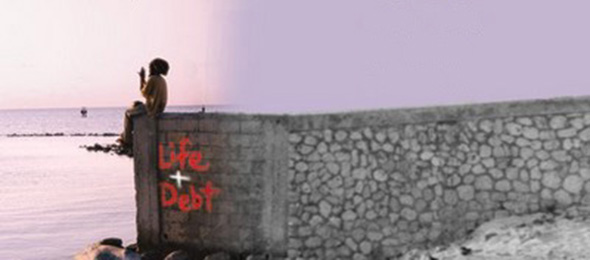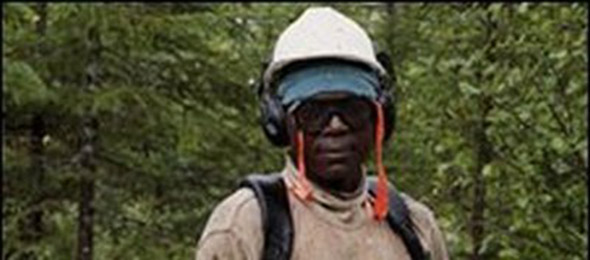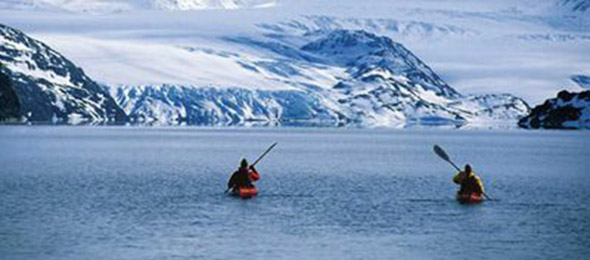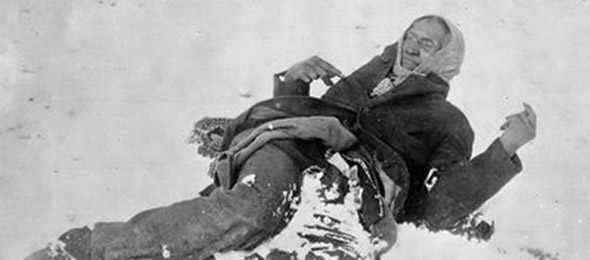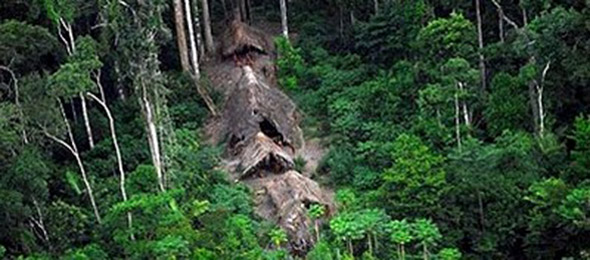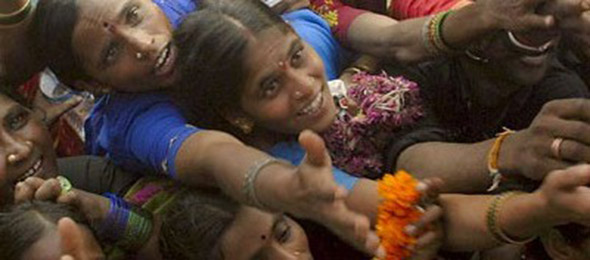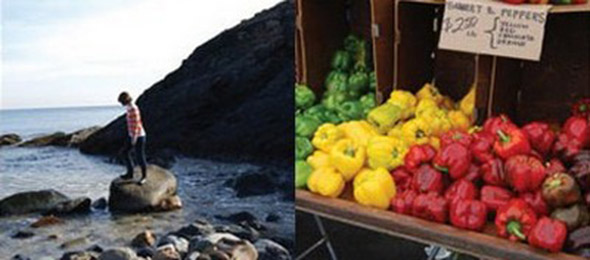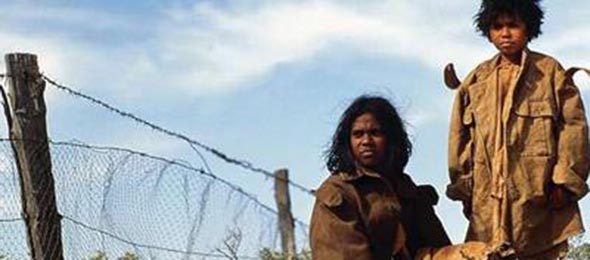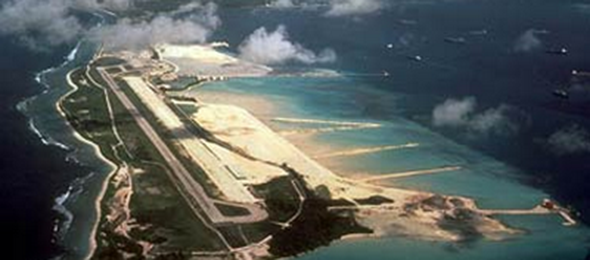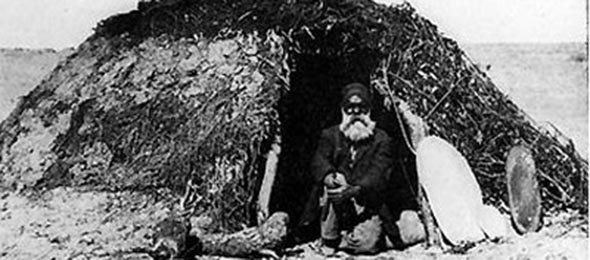Chi-Raq
Do the Right Thing, I think, remains the seminal Spike Lee flick. The timing of its release, the story, the humor, the music combined to deliver a piece of cinematic culture that endures. Chi-Raq is in some ways hard to compare. It’s very good, but is it as important? Is it more important?
Platform @ MIT Media Lab | Sheldon Gilbert
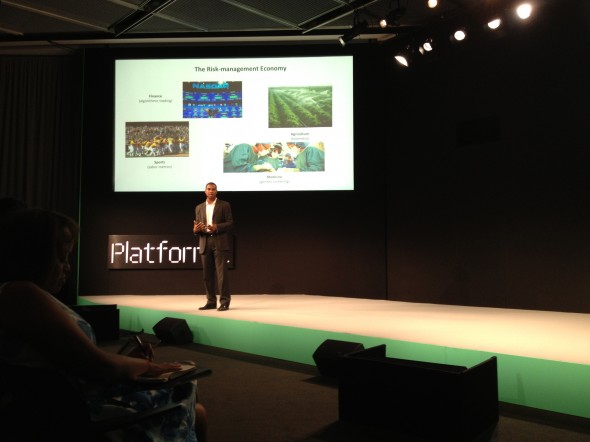 Sheldon Gilbert of Proclivity takes the stage at MIT’s Media Lab at the Platform Summit to talk about risk; mitigating risk, taking risk and profiting from risk. Sheldon’s education in molecular biology, he says, led him down the path as biologists looked at DNA and predicted the likelihood (risk) that someone might develop heart disease or cancer he applied his predictive math skills to ad tech.
Sheldon Gilbert of Proclivity takes the stage at MIT’s Media Lab at the Platform Summit to talk about risk; mitigating risk, taking risk and profiting from risk. Sheldon’s education in molecular biology, he says, led him down the path as biologists looked at DNA and predicted the likelihood (risk) that someone might develop heart disease or cancer he applied his predictive math skills to ad tech.
The Slumdog Reality Tour
Reading the Telegraph’s story, Slumdog Millionaire: Mumbai’s real slumdogs, I’m thinking no, there can’t really be tours of the slums of Mumbai. Why?
Reality Tours believes, “that Dharavi, the biggest slum in Asia, is one of the most interesting places to see in Mumbai.” The tour offers to, “break down the negative image of Dharavi (and India’s slums) and its residents,” and to “bring people of different countries, races, religions and social classes together to increase understanding and empathy.” Hmm. The tour is ten bucks per person for the “short tour” or twenty for the “long tour” or you can opt for the “private long tour” for $80 bucks if you’d rather not have the company.
So there’s two sides to this (at least). Certainly the issues we never see never get addressed, so perhaps some good could come of it. And then, the fact that we’re so disconnected from one another that we need to take a tour to shock us into action is probably just the state of the state currently. Perhaps the US election will bear out that we hit compassion’s low point with the Bush Administration and my HOPE is that a new cloud-clearing era has arrived. Hope.
I don’t think the tour should be on the itinerary though. Volunteering seems a step in the right direction. I know there are a host of issues surrounding even that: “Gap-year ‘voluntourists’ told not to bother” outlines many of the hurdles there. But still, helping has to be better than watching.
I support Kiva where I can help people to help themselves with loans (micro) that have an amazing track record for repayment, and I choose the person with whom I want to ‘invest”. For the cost of a slum tour I have the chance instead to help someone start a sustainable business.
Blackbird, the Black Browser?
Have seen some high energy comments about the new “Black” browser, Blackbird. With a Black president it might seem that the ultimate in assimilation has been accomplished, so why now?
I haven’t used the browser, but I don’t think it’s a bad idea. On-line users are grouped by likes, age, and all sorts of demo’s, so if some users feel like they get the best out the Net using a Black browser, fine. Some of the most outspoken people have been Black and see it as some sort of throw-back, or even an insult.
But Black people are not monolithic. Black people are as diverse as any ethnic group, and as mixed racially, and are literally all over the map. If some portion of the folks want to use a Black browser because it speaks to them, and delivers more relevant search returns then it’s a win for Ed Young. But read the comments at TechCrunch and you can see that some have taken the browser as a symbol for something bigger.
Life & Debt; Paradise Revisited…
Admittedly, I am late to this party. Life & Debt came out a while ago, but I just Netflixed it, so I got to see the Stephanie Black directed feature late. Better than never.
The film tells the story of the island nation of Jamaica’s interaction with the International Monetary Fund. And the effects. I polled a friend and Jamaican native in an informal fact-check and more-or-less got the idea she didn’t agree with the film or the presentation. But Jamaica is a pretty partisan place, and the facts as laid out in the film are sad and the presentation pretty compelling. Belinda Becker, who I know as a New York trend-maker, narrates part of the film. Overall the film is riveting because some of the story-lines, the effects of the IMF relationship are so monumentally disastrous and often inhumane, that you’d think it would sit somewhere on the front page of the New York Times. Here is what the New York Times had to say recently about the film:
“The term ”globalization” is so tinged with rosy one-world optimism that it’s easy to assume the essential benignity of an economic philosophy whose name vaguely connotes unity, equality and freedom. But as Stephanie Black’s powerful documentary ”Life and Debt” illustrates with an impressive (and depressing) acuity, globalization can have a devastating impact on third world countries. The movie offers the clearest analysis of globalization and its negative effects that I’ve ever seen on a movie or television screen.”
Whoa. Watch it.
Favorite Mag & Bhopal
For several reasons, mostly the armchair adventure aspect, my current favorite magazine is Geographical published by the Royal Geographical Society in the UK. It’s what Outside magazine would be if it didnt have to pander to advertisers.
I was reading my favorite magazine and out dropped a piece of direct marketing, but not for sunglasses or a new Toyota Landcruiser, armchair favorites, but for Bhopal. I don’t know. I thought the whole thing had been solved, but really it was simply off my radar.
It’s not. The stories are heartbreaking. And though Union Carbide was responsible for the clean-up and somehow transfered that responsibility, the end result is that the abandoned plant is sitting there like Chernobyl. Reeking and killing. In any event the magazine Georgraphical is well worth reading, the link to Bhopal.org takes you to an organization that is helping, and I think help, from Americans, makes sense. We need to check our capitalist ambassadors from time to time as earnings aren’t all that matter.
Canada’s New Lumberjacks
The BBC has an interesting/funny/not-so-funny story on Canada’s African lumberjacks. Seems African’s will go a long way for a job.
An employer’s compliment on the ability of his workers can be taken a couple of ways, “Mr Richard believes that his African employees have more stamina, noting that the overwhelming majority tough it out until the end of the season.”
Given the global economy and domestic meltdown a good job is as good as gold. I’m not sure how Canadian’s feel about competing with African’s, but between exporting jobs and importing labor the working folks are getting squeezed vice-like.
Pacific Magazine
I love Pacific Magazine. The publication brings the indigenous culture of the region front and center without the subtle condescending tone I see in too much media.
Western culture has become so dominant that it could easily erase any other unless there is a strong effort at preservation. And while the medicine, learning, government, and scientific advances that go hand-in-hand with the Western world are many, the lack of connection to the planet is, for me, a very fundamental flaw. I’ve ranted about Captain Cook in previous posts and won’t do so here. Check out the article in Pacific Magazine and the images as they celebrate their culture in “American” Samoa.
A Sea of Non-Diversity @ Glastonbury
I’m sure there were a couple of brown faces besides Jay Z at Glastonbury, but even he was not unanimously welcome. Oasis lead Noel Gallagher moaned that Hip Hop had no place at the Festival (deleting Oasis from iTunes). Somewhat in the same vein Amy Winehouse apparently called Kanye a c**t in one of her songs. So maybe music is not the touchstone of common youth culture that it seems? (yep, I see a little diversity in the image, but c’mon)…
Paradise
I don’t know why Fiji Times and Pacific Magazine sit in my “weekly” favorites, but they do. Fiji found its way to my favorites mostly from an environmental standpoint but once there the on-going story of the indigenous people and the cultural impact of colonialism became just as compelling. Those beautiful islands we see in Pacific postcards are largely stuck in a post-colonial netherworld.
And as I write this post, “Mutiny on the Bounty” (1935) rolls by on my TV, in black and white with the sound turned down. The “natives” don’t look very native. And the movie doesn’t delve into the fact that “First Contact” was a disaster for indigenous peoples.
But, that said, the “Mutiny” really did put Captain Bligh in a 23 foot boat that he would sail, with 18 aboard, over 3,000 miles. Armed with a sextant and aboard an open boat there are probably just a few sailors who could do what he did even today. C’mon no chart, no compass (no GPS). Very few.
A further aside is the story of many of the mutineers (from the year 1789 we’re talking) who made their way to Pitcairn Island where their descendants still live — some 47 or so. In 2004 there was trial of many of these wayward souls for sexually abusing their own inbred young people – read the Wiki. So the long arm of British justice still reached these remote castaways and stirred the very old pot. It’s a very strange story, one that Vanity Fair featured as well. Strange that the ghosts of that day and those people are very real and are still living off-balance lives in that faraway place so long after the original crime.
Can’t mention the Pacific without Captain Cook’s voyage and that is well documented — read Blue Latitudes.
But more so read Fiji Times. It’s curious to see such an ongoing upheaval politically, socially and now environmentally in a place we normally think of as Paradise. Maybe Paradise really is just a state of being, temporary and not any one place after all.
Greenland
Got my first issue of Greenland Today magazine. As a former publisher I still really love print. And the plight of indigenous people around the globe is a magnet for my attention.
Greenland according to Wikipedia is “self-governing Danish province” which essentially means Colony. Interestingly, Greenland is taking steps towards independence with a Referendum later this year. In any event, it was one trip I had on the books that I never completed. I had planned to go kayaking with Ultima Thule of Iceland, but work intervened. Something to look forward to.
Wounded Knee Redux
Pictured, Miniconjou chief Bigfoot lies dead in the snow after massacre at Wounded Knee. So we’re giving some land back to the Sioux. I’m certain the NY Times will get around to the story, but meanwhile check Britain’s Independent, “Nearly 120 years after the last massacre of Native Americans by the United States cavalry at Wounded Knee, some of the lands confiscated from their descendants are to be returned to the Oglala Sioux.”
And a Wiki-history lesson: “The Wounded Knee Massacre, also known as The Battle at Wounded Knee Creek, was the last major armed conflict between the Lakota Sioux and the United States, subsequently described as a “massacre” by General Nelson A. Miles in a letter to the Commissioner of Indian Affairs…” By the time it was over, more than 300 men, women and children of the Lakota Sioux lay dead. Twenty-five troopers also died during the massacre, some believed to have been the victims of “friendly fire” as the shooting took place at point blank range in chaotic conditions.
If you’re up for it read the book, there are no celebrities and it will make you cry: Bury My Heart at Wounded Knee.
oh Africa…
The stories out of Africa, the stories we see in America, are rarely bright. And neither is this one in The Independent: Murdered by Mugabe’s mob, “…His eyes had been gouged out and his tongue cut off. The 30-year-old was so badly beaten his father had trouble identifying him…” The story of one man trying to make a difference, risking his life, and losing it. No, not lost really, taken, and in a horrible way that screams for justice as some insignificant salve for a wound that can’t be repaired. Mugabe freed Zimbabwe from it’s colonial exploiters, and has plunged an entire nation into a nightmare. Tonderai Ndira paid dearly.
The Uncontacted…contacted
One of the last remaining tribes in the world uncontacted by “us” has been….well contacted. At least photographed. This in Brazil. And as much as it seems novel that these people exist, along with the general romantic idea that pre-contact is somehow better, more honest and closer to the source, it is also cruel joke to not simply inform them that there have been certain advances over the past couple thousand years.
Sure many advances, television for instance, have down-sides, like reality programming, which outweigh the benefit. But, there are some, medicine, for example that are very helpful. Life-saving. So will Brazil introduce these folks to health care or live and let live? Likely the latter.
I’m sure this path is informative on some level for science, but it’s odd to not tell another human being that they could forgo significant pain and suffering even if at some cost to living in harmony with nature. So maybe put it to them? That’s what I’d do.
The whole episode brings up a favorite book, “Last Places,” by Lawrence Millman. Funny in an outdoorsy kind of way.
Not a Pretty Picture
The New York Times tells us that the food shortage or the price of food is beginning to cause havoc around the world. The article offers, “Haiti’s hunger, that burn in the belly that so many here feel, has become fiercer than ever in recent days as global food prices spiral out of reach, spiking as much as 45 percent since the end of 2006 and turning Haitian staples like beans, corn and rice into closely guarded treasures…”
I don’t know why The New York Times uses code words in their articles. In this story titled “Across Globe, Empty Bellies Bring Rising Anger,” they choose the word “bellies.” A word hardly used here in the States except when dicussing babies. Its use here is condescending.
This choice of words is similar to the The New York Times calling US people “poor” and some foreigners “peasants,” or their atrributing Egypt to the MidEast as opposed to Africa. All a form of subtle revision or their peculiar lens on the world of brown people.
Choice of words aside, food is a growing problem for many people around the world. Excellent organization that can help is Care.
Stuff White People Like…
Stuff White People Like is a website that is what it says it is. And you can check your racial disposition against the Full List of Stuff White People Like. Hip Hop’s Mos Def makes the cut at #69, beating out the Idea of Soccer at #80. Yep, another reason why we have the world wide web…
Coming Correct, Almost
Watching a movie like Rabbit Proof Fence (image above from the film) one could get the idea that the issues of indigenous peoples are more history than current news. But Australia manages to confound that idea (though they have plenty of company). A recent article article in today’s Guardian, Australia’s ‘stolen’ children get apology but no cash should keep us informed that while these problems may have been solved in some senses the repercussions remain as does the legacy of injustice. There is an on-line apology for that injustice which has collected some 24,000 that looks woefully inadequate.
Diego Garcia: Terror Island
Some islands are better than others, and some are just bad. Diego Garcia was once an uninhabited atoll sitting in the Indian Ocean about a 1000 miles from anywhere else. Effectively paradise.
Sometime in the 1700’s the French decided to ‘populate’ the island with plantations and the requisite slave labor needed for the operation of these businesses. That’s bad, but no as bad as it gets.
The island was forcibly depopulated beginning in 1971 when the United States struck a deal with the British for a US military base that can and has been used as a base for B-52’s, B-1’s and other aircraft needed for US efforts in far-flung parts of the globe that might otherwise be inconveniently out of the reach of our ordinance.
If all that is not bad enough, The Guardian recently adds that Diego Garcia may also house a secret CIA jail used to interrogate terror suspects. An interesting aspect of all this, from my point of view, is how these stories fail to garner any ink back here at the source, in the United States.
The Maori Revolution
Recent fascination with all things South of the Equator continues. The BBC reports that New Zealand activist Tame Iti pictured above has been arrested for planning what would amount to revolutionary or terrorist activities (depending on one’s perspective). Iti has been an activist for indigenous rights as well as a business person, family man and entertainer. 17 others were arrested and it seems there are two very different versions of what his group was doing or about to do; ranging from the authorities view that they intervened and disrupted a guerrilla-style training camp to the more benign view that the group was more comical than dangerous. In any event, Iti had been under surveillance for 18 months, and as a vocal supporter of Maori sovereignty the event sends a message that Big Brother, as one might suspect, is certainly watching.
Development Down Under
For some reason Australia has been a recurring theme in the media that crosses my path. The picture above is from an article in The Guardian and says, more or less, that the Aborigines were a bit more developed than scientist may have believed. Unrelated to the article and prior to reading it, I watched Ten Canoes this week. A kind of spoken word recounting of an Aboriginal myth that is more entertaining than that probably sounds.
More so than Australia as a recurring theme, development and the idea of what constitutes development as been a greater theme. I am reading Walter Rodney’s, “How Europe Underdeveloped Africa,” and he frames development for the individual as: “…implies increased skill and capacity, greater freedom, creativity, self-discipline, responsibility, and material well-being.” That seems fine, and it’s hard to argue than even for those people who are worst off in a country like the United States are still much better off than most in many other places. And, for me, I wonder if development in terms of greater well-being for a few at the expense of many others (I believe the prosperity of rich countries is generally at some expense to less powerful) is truly development.
First People, Last People
Racism down below. A recent story in the Guardian points to how little has changed for the indigenous people of Australia. By that I mean things have been bad for a long time and they continue along that unfortunate track. The sobering statistics are from the Guardian, “Alcohol causes the death of an Aborigine every 38 hours. Aborigines and Torres Strait Islanders…live on average 17 years less than their fellow citizens. The average life expectancy for Aboriginal men is 59, compared with 77 for non-indigenous males, according to a 2006 report by the Australian institute of health and welfare.” If you want to find out more or how to help I’ve found the website for Cultural Survival to be a solid starting point.
Simmons to Save Hip Hop?

You couldn’t miss the story at Yahoo — Russell Simmons now advocates leaving some words out of the Hip Hop vernacular. So I guess we should thank Imus for all this.
Hip Hop has been billed as street poetry or the authentic voice from the ‘hood. But moguls like Jay Z, Sean Combs, and Dr. Dre live pretty far from the ‘hood, but still mine the same territory as guys hawking mix-tapes — they use the same language to maintain credibility with the core audience. Or so the story goes.
So Simmons public break with that is positive but…I mean it’s positive to perhaps let kids know that there is some credible adult in the Hip Hop world that thinks…err…says it’s not the right way to speak. As with everything associated with the whole Imus affair, the idea of policing thought and then speech is ultimately a no-win — does the market decide by not tuning in or do we legislate speech? It looks slippery at best, with a lot of people jockeying to be seen as showing up on the right side of the fence.
Uncle Ben is Back
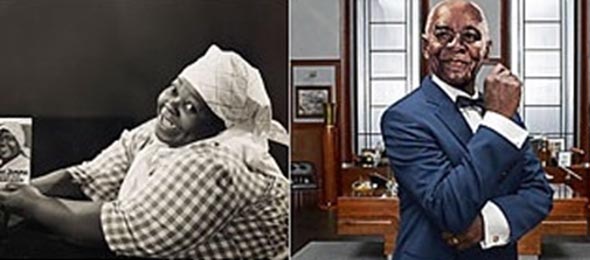
Uncle Ben has been promoted to Chairman. The New York Times reports that Uncle Ben, “is taking center stage in a campaign that gives him a makeover — Madison Avenue style — by promoting him to chairman of the company.” Somebody at TBWA Chiat Day needs to think a little harder and longer or perhaps just think period. Just to be clear, the Aunt Jemima image was used in the Times story, and is not affiliated with Chairman Ben. An updated Aunt Jemima still hawks pancake syrup and mix for Quaker Oats, but as I write this she has yet to match the executive status of Ben (formerly Uncle Ben).

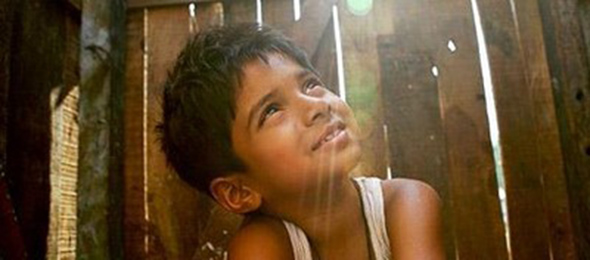

![Reblog this post [with Zemanta]](http://img.zemanta.com/reblog_e.png?x-id=34bca066-9177-4be5-b443-2674616ee7ab)
